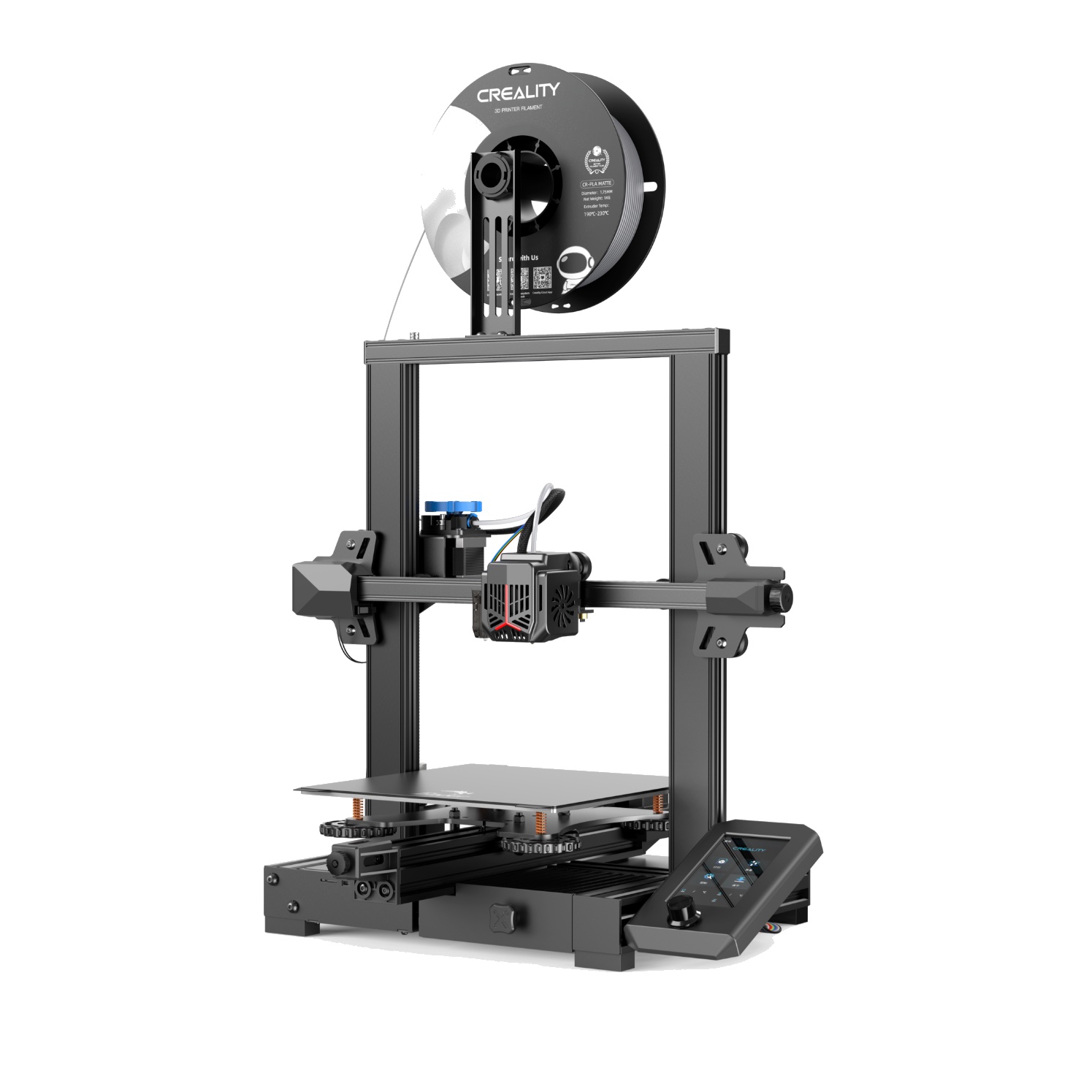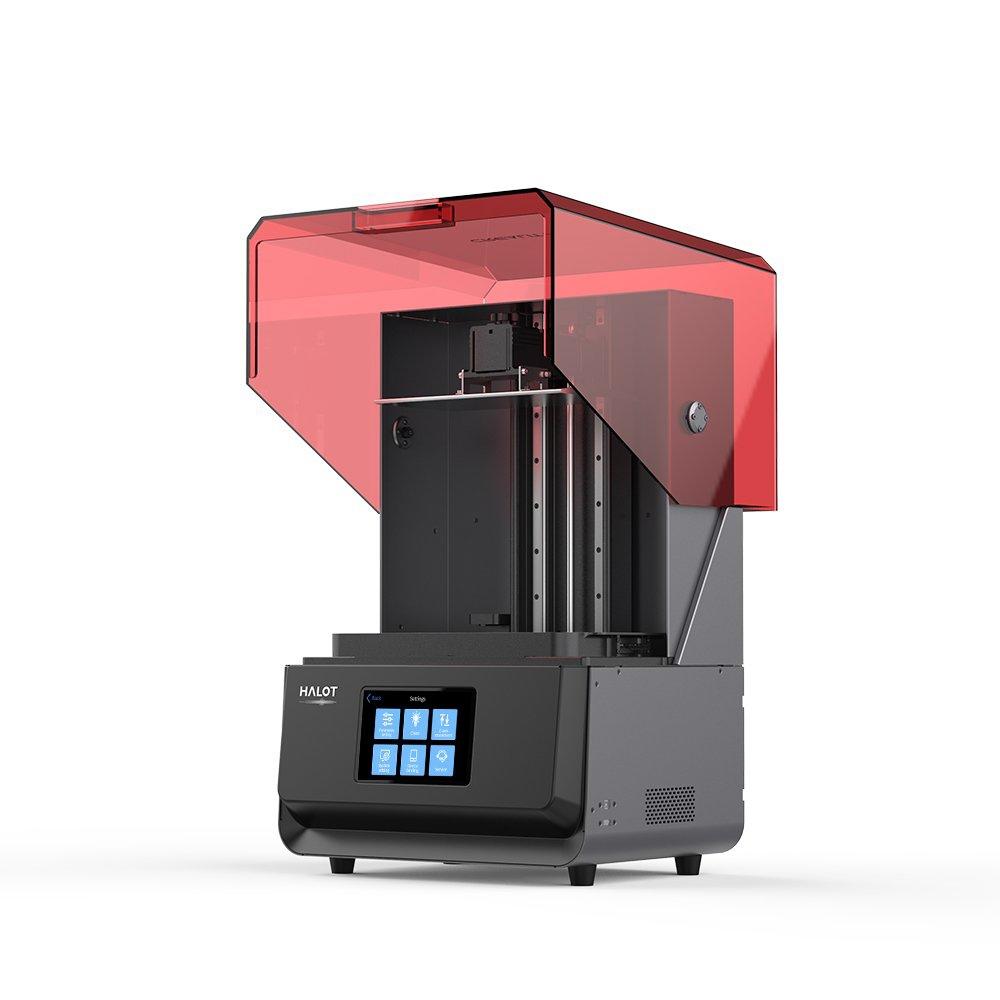Compare Ender 3 V2 Neo vs Halot Max
Comparison between the best 3D printers
Choose the best 3D printer at the best price. The cheapest 3D printers are here.
Buy a 3D printer here with 3D Fila.
 |
 |
|
| Model | Ender 3 V2 Neo[BUY Ender 3 V2 Neo] |
Halot Max[BUY Halot Max] |
| Printing Material | Filament | Resin |
| Buy Filament for Creality 3D Ender 3 V2 Neo | Buy Resin forCreality 3D Halot Max | |
| Estimated price | $310,00 | $3000,00 |
| Manufacturer | Creality 3D | Creality 3D |
| Release Year | 2022 | 2021 |
| Print Volume [mm] | 220x220x250 | 293x165x300 |
| Printer Size [mm] | 438x424x472 | 480x387x770 |
| Weight [kg] | 9,8 | 32,5 |
| Power Loss Recovery | YES | NO |
| Maximum Resolution [mm] | 0,1 | 0,03 |
| Processor | 4.2.2 mainboard | |
| Display | Display touchscreen 4,3'' | Display touchscreen 5'' |
| Power Supply | ||
| Connectivity | SD / USB | SD / USB / Wi-Fi |
| Operating systems | Windows, Mac, Linux | Windows, Mac, Linux |
| Date of registration in the system | 2022-12-09 | 2022-11-04 |
| Release date | 2022 | 2021 |
| Extra features | The Ender 3 V2 Neo printer stands out for its automatic bed leveling with the CR Touch system, ensuring high-quality initial layers. It features an all-metal Bowden extruder for increased durability and improved filament handling. Its flexible, PC-coated magnetic build plate makes it easy to remove prints and is durable and easy to clean. It also includes a new user interface with model preview and an updated gantry design. The Ender 3 V2 Neo maintains the same build volume and temperatures as the previous version, supporting popular filaments such as PLA and ABS. It features a quiet 32-bit mainboard and additional features such as a filament sensor, print recovery, simple 3-step assembly, an integrated toolbox, and belt tensioners. | The Halot Max printer stands out for its large print size (293 x 165 x 300 mm) and uses SLA technology. It has an integral light source for improved accuracy and a strong core with an advanced operating system. Its Z-axis module ensures high precision, supported by efficient slicing software. The machine offers online OTA updates and boasts an adjustable layer thickness between 10 and 200 microns. Its XY-axis resolution is 3840*2160, with 0.05 mm accuracy, and an integral 405nm light source. The printer includes a 5" touchscreen and multiple connectivity options, such as USB, Creality Cloud, and HALOT BOX WiFi. With cutting-edge technology, the Halot Max is ideal for printing small models with uniform precision, thanks to its self-developed lighting system and stable printing mechanism, which includes dual linear guides, ball screws, and an intelligent brake system. |
| Support for multiple colors and materials (AMS and CFS) | NO | NO |
Notes * |
||
| Cost-benefit | 6 / 10 | 5 / 10 |
| Hardware | 2.4 / 10 | 1 / 10 |
| Tela | . | . |
| Print volume | 3 / 10 | 3 / 10 |
| Performance | 0 / 10 | 9 / 10 |
| [BUY Ender 3 V2 Neo] | [BUY Halot Max] |
Conclusion |
| In comparing the Ender 3 V2 Neo and the Halot Max 3D printers, several factors come into play, including price, print volume, hardware capabilities, performance, and additional features. The Ender 3 V2 Neo emerges as a cost-effective choice, particularly for hobbyists or newcomers to 3D printing. It provides a solid build volume of 220x220x250 mm and includes valuable features such as automatic bed leveling, an all-metal Bowden extruder, and a user-friendly touchscreen interface. Its design is compact and lightweight, making it easy to handle and set up. Furthermore, it offers print recovery and a filament sensor, which enhance its usability. While its performance is rated lower than that of the Halot Max, its affordability and versatility make it a great option for general-purpose 3D printing with materials like PLA and ABS. In contrast, the Halot Max caters to more advanced users who require precision and larger print capabilities. With a significant print volume of 293x165x300 mm and superior resolution, it is designed for detailed projects where accuracy is paramount. However, its higher price point reflects its advanced SLA technology and features such as OTA updates and multiple connectivity options. While it delivers impressive performance, the Halot Max’s weight and size may pose challenges in a smaller workspace, and its lack of power loss recovery is a notable drawback for continuous printing. Ultimately, the choice depends on individual needs and budget. For those seeking a balance of performance and affordability, the Ender 3 V2 Neo is the better option. On the other hand, if superior accuracy and advanced features are priorities despite a higher cost, the Halot Max stands out as a powerful, specialized tool for professional or intricate printing applications. |

